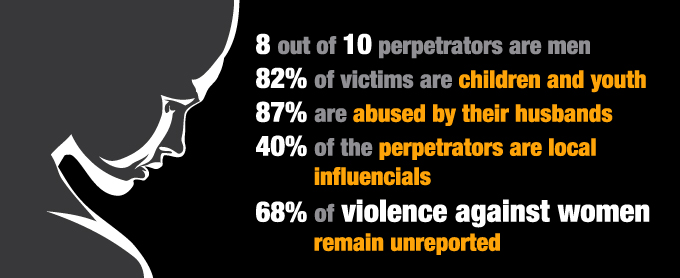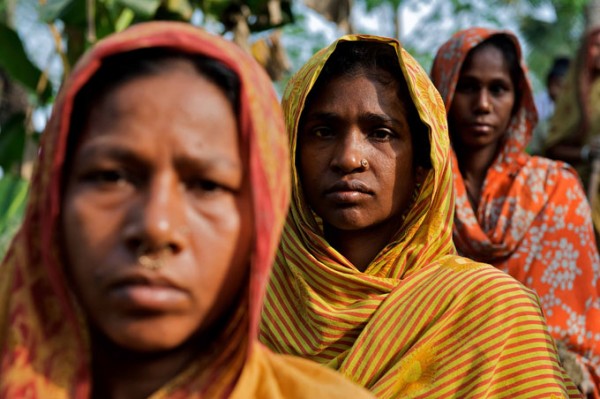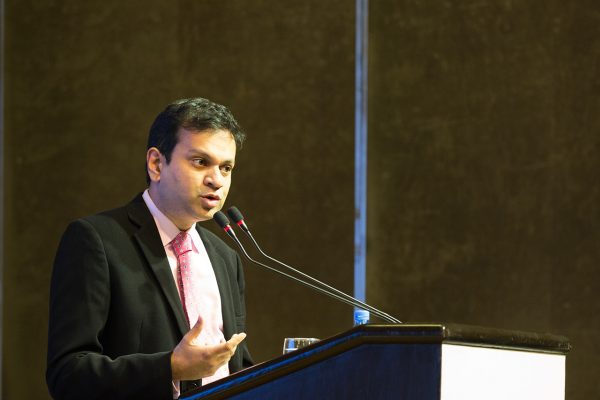Reading Time: 2 minutes
Two out of three Bangladeshi women are forced to deal with some form of violence during their lifetime. This can be domestic violence, rape, acid attacks, trafficking or sexual harassment, these being the most prominent forms. If you are a woman, chances are you, or someone you know have already faced harassment or some other form of violence.
Bangladesh is not alone in struggling to curb violence against women. The issue cuts across race and culture, and signifies deep structural inequalities that limit the lives and choices of women. According to a nation-wide study published in 2013 by the Bangladesh Bureau of Statistics, about 87 per cent of women in Bangladesh are abused by their husbands. Bangladesh has one of the highest rates of child marriage in the world where today 1 in 3 Bangladeshi girls aged 15-19 are married.

BRAC’s community empowerment programme (CEP) identifies and reports incidents of human rights violations from 55 districts of Bangladesh. This is done through its network of 12,350 ward-level and women-led institutions called polli shomaj– where majority of the participants are women, and where violence against women (VAW) takes the strongest precedence.
Between 2011 and September 2015, CEP reported a total of 2,546 women murdered, the most common cause being dowry disputes. Another common cause was found to be rapists murdering their victims to prevent identification afterwards. CEP reveals that eight out of 10 perpetrators of violence are men.
Counts of murder aside, many women deal with physical abuse in their daily lives. During the same period, 3,261 women have experienced some form of physical violence in the regions that CEP operates in.
Across the world, extreme violence takes place in systemic ways. Consider the cases of the 200 Nigerian school girls kidnapped or the five-year-old gang raped in a Delhi slum last month. There is a rising number of gang rapes occurring in Bangladesh- a recent incident being the gang rape of an indigenous girl in Dhaka. These repeated assaults only reinforce the fear and insecurity that women live with on a daily basis.
Between 2011 and 2015, CEP recorded 3,327 cases of rape- as reported through its network of polli shomaj. The reports from 2011-2015 also show an increase in suicide. Cyber bullying has begun to play a huge role in this tragedy. Having sexually harassed the victims, the obscene videos are sometimes circulated via mobile phones and the internet with the intention to humiliate the victims and their families. In a study conducted across 44 unions of Bangladesh, BRAC in collaboration with UNDP found that 68 per cent of occurrences of violence against women go unreported. This only goes on to reflect the underrepresentation of the status quo.
The International Day for the Elimination of Violence against Women on 25 November marks the beginning of the 16 Days of Activism. It ends with Human Rights Day on 10 December. Governments, UN entities and civil society organisations will commit to take action to close the gaps that hold back women and girls. Without active participation from men, however, all efforts to counter violence against women will face utter failure.
In 2013, CEP for the first time initiated a project to engage men as partners to reduce violence against women. It set up rural community watch groups in five districts, bringing together political and religious leaders, teachers and youth to build momentum in its efforts to change behaviour. There was a sharp decrease in the rate of violence in these areas- notably, decrease in child marriage and the practice of demanding dowry.
The fear of violence prevents women from being equal citizens. It is easy to look the other way when we are not the ones facing harassment. But the fact remains- this is still our problem, one that calls for concerted action involving every actor- institutional and individual.
Salina Shahnaz Shilpi is communications manager at BRAC’s community empowerment programme.





